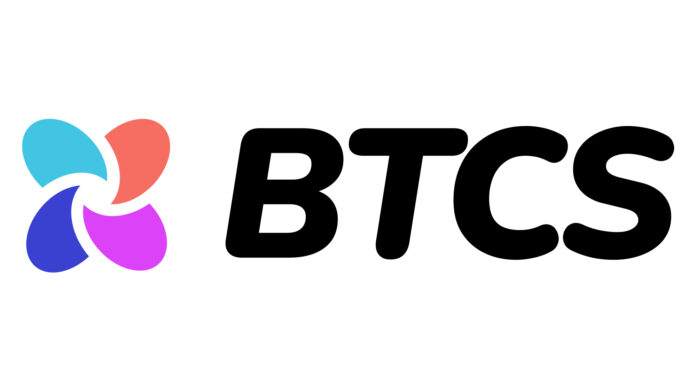Nasdaq-listed blockchain company BTCS Inc. (NASDAQ: BTCS) has teamed up with Figment Inc. and WonderFi Technologies to introduce a system that changes how Ethereum transactions are processed and validated. This innovative solution called the Staker Protection Plan (SPP), aims to make Ethereum transactions more reliable while helping validators earn more stable income. The partnership represents a significant milestone in addressing critical challenges in blockchain adoption.
Charles Allen, CEO of BTCS, emphasizes the strategic importance of this collaboration: “By partnering with Figment and integrating WonderFi as the first participant, we are laying a strong foundation for staker empowerment and ecosystem growth. This partnership exemplifies our dedication to delivering solutions that foster revenue growth and operational excellence.”
The timing of this initiative is particularly significant, as it coincides with Ethereum’s anticipated Pectra update in March 2025. BTCS, which has established itself as a leader in blockchain infrastructure technology, brings substantial expertise in Ethereum network operations, particularly block building and validator node management. The company’s Builder+ operation uses advanced algorithms to optimize block construction for on-chain validation.
Traditional Ethereum Transactions vs. The New System with SPP
When you make an Ethereum transaction today, it enters a pool of pending transactions. Block builders, like BTCS, construct blocks by selecting transactions from this pool based on factors such as gas fees and MEV opportunities. Validators, responsible for proposing blocks on-chain, typically accept the most profitable block proposal submitted by builders.
However, this process introduces uncertainty—not just for users but also for Validators. In the current system, validators rely on volatile transaction fees (gas fees) to determine their earnings for each block. Market conditions, sudden network congestion, and shifting bidding strategies can cause fluctuations in validator revenue. The SPP system addresses this by allowing validators to pre-sell block space to builders like BTCS, creating a more stable and predictable income stream while still allowing builders to populate blocks efficiently.
BTCS’s new system changes this process in four significant ways:
1. The Revenue Shield: Making Validation More Profitable
Think of block space like advertising space in a newspaper. In the current system, validators don’t know how much they’ll earn from each block until after they process it. BTCS’s Revenue Shield changes this by enabling Validators to “pre-sell” space in future blocks to block builders, like BTCS, similar to how a newspaper might sell ad space in advance.
This pre-selling guarantees validators will earn up to 90% of the profits from proposing the block submitted by the block builder. This stability could help validators earn up to 4% more than they currently do.
2. Built-in Compliance
The SPP system includes automatic checks to ensure all transactions follow important rules and regulations, particularly those set by the Office of Foreign Assets Control (OFAC). This is like having a built-in compliance officer who ensures everything stays within legal boundaries. This feature is crucial for large institutions that need to follow strict regulatory guidelines.
3. Transaction Pre-Confirmations
The SPP system introduces a potential pathway for BTCS to engage in pre-confirmations with end-users, including dApps, enhancing transaction predictability and efficiency. This would allow users to receive early assurance that their transactions are likely to be included in upcoming blocks, optimizing execution and reducing uncertainty. While this process is not yet live on mainnet, it represents a future opportunity for BTCS to improve access to block space and streamline transaction flow.
Strategic Partnership and Industry Impact
This collaboration brings together three powerhouses in the blockchain industry. Figment, one of the largest staking infrastructure providers globally, manages over $15 billion in staked assets across 700 institutional clients. The company has recently made significant strides in expanding its operations, including raising $110 million in a Series C funding round at a post-money valuation of $1.4 billion. These funds will support its mission to drive Web3 adoption by expanding its team and capabilities.
WonderFi’s role as the first participant in the pilot program is particularly noteworthy. As Canada’s leading regulated crypto trading platform with over $2.2 billion in assets under custody, WonderFi plans to implement the system across its Bitbuy and Coinsquare platforms. The company has shown impressive growth, with Q4 2024 alone processing over $1.1 billion in trading volumes and projecting revenue between $20.5 million and $21 million—a 156% increase from the previous quarter.
Dean Skurka, CEO of WonderFi, shares his vision for the partnership: “We believe that this program will not only enhance our validator operations but also increase revenue for our shareholders and ultimately higher staking rewards to our customers. We’re excited to be at the forefront of initiatives that have the potential to redefine validator strategies.”
Who Benefits and How?
Validators: More Stability and Predictable Earnings
- Gain a more stable income stream through pre-sold block space, reducing revenue uncertainty.
- Predict earnings in advance rather than relying on fluctuating transaction fees (i.e., gas).
- Benefit from built-in compliance checks, ensuring transactions adhere to regulatory requirements.
Builders: Greater Access to Block Space and Revenue Opportunities
- Lock in block space ahead, creating more opportunities to optimize revenue and maximize profits.
- As adoption grows, increased transaction flow to BTCS’s block builders enhances opportunities for constructing profitable blocks.
- Enables new possibilities, such as pre-confirmations with end-users and dApps, improving transaction execution, and strengthening relationships with transaction originators.
Market Impact and Future Prospects
The launch of the Staker Protection Plan represents more than just a technical advancement. For BTCS, which reported a market capitalization of $55.7 million in early February 2025, this initiative aligns with its broader strategy of driving scalable revenue growth through blockchain infrastructure operations. The company also released a shareholder letter in January 2025 noting that 2024 revenue had increased to over $3.7 million up 177% from 2023.
WonderFi will be the first to offer these features through its Bitbuy and Coinsquare platforms, with Figment providing the technical infrastructure to make it all work. This means WonderFi’s customers will be among the first to experience these improvements in transaction processing.
Looking Ahead
As the blockchain industry evolves, this collaboration between BTCS, Figment, and WonderFi sets a new standard for transaction processing and validation. With Ethereum’s Pectra update on the horizon, the timing of this partnership couldn’t be more strategic. The success of this initiative could influence how other blockchain networks approach transaction processing, potentially reshaping the future of digital asset operations globally.
The partnership demonstrates how collaboration between industry leaders can drive meaningful progress in blockchain technology. By combining their expertise—BTCS’s technical innovation, Figment’s infrastructure prowess, and WonderFi’s market leadership—these companies are paving the way for a more secure and efficient digital asset landscape.
















